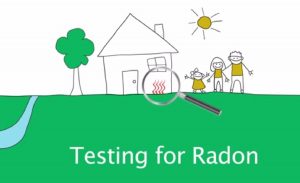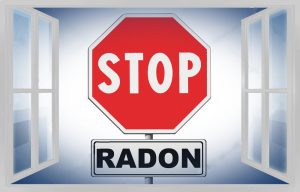There are over 20,000 radon-related deaths every year in the US. The worst part about this is that almost all of these deaths are preventable. If everyone understood the dangers of radon and how to prevent its slow accumulation, radon sickness can be reduced to very low levels. So, how do you go about radon testing?
One of the key ways to ensure that radon doesn’t affect you or your family is by testing for radon. Because radon is colorless, odorless, and tasteless, we humans are not able to detect it in the air. In enclosed spaces, we are constantly breathing in this radon gas and slowly killing ourselves internally. It is for this reason that radon testing is required every year. Even if you have a radon mitigation system installed, it is always best to test for radon to prevent any leaks.
Why is radon so dangerous?
Though many of you may be aware of the dangers of radon, there are some who still don’t understand the urgency. Sure, radon is not an immediate killer. It can take anywhere between 5 to 25 years for someone to develop lung cancer by being exposed to it every day. But, if you don’t test your home for radon, those years can pass by very quickly, and it may be too late in the end.
Especially as a smoker, you and those around you can be drastically affected by radon. There is a much higher chance to develop lung cancer if you’re a smoker or in the presence of one. Testing your home as often as possible is the only way to ensure that your family is safe living at home.
Where you live can also affect how you’re affected by radon. Certain states in the US have elevated levels of radon in the atmosphere. This means that there is a much higher chance for high levels of radon at home. In these cases, testing your home more than once a year is crucial to taking care of your health.
Top Reasons Radon Testing Your Home Twice a Year
There are certain external influences that can affect radon readings throughout the year. This means that radon levels can fluctuate at different times of the year. This happens because:
Cold temperatures increase radon production
It is a well-documented fact that radon formation is better in colder temperatures. So if you test your home during the spring, it may show a low radon level. However, during winter, this value can rise to levels that are considered dangerous (over 4 pCi/L). This doesn’t happen all the time and in every state, but the possibility is there.
Constant weather changes
Radon is formed underground. The amount of radon released into the air depends on the consistency and movement of the soil. With inclement weather, chances are that the surrounding soil is going to sift around a lot. This can cause multiple gaps in the soil for radon to rise out of.
Because these changes are unpredictable, it is always safest to test twice during the year. This way, you can ensure that radon levels stay low throughout the year. Even if you have a radon mitigation system installed that monitors radon levels, you should still test it yourself. There is a possibility for the device to fail or break down. If you’re unaware of this failure, radon levels will continue to rise and reach dangerous levels.
This is also why it would be best to set up radon servicing appointments every year to check on the radon mitigation device. For this purpose, you will need to hire professionals who have the experience to check on radon levels.
When should you test for radon?
As the previous section indicated, there are specific times in the year when radon levels can rise. As such, the best times to test for radon should be during the spring and winter. Only testing during one of these periods can potentially cause long-term problems. But, if you consistently check twice a year during these seasons, you can rest easy knowing radon levels are low.
If you haven’t done so already, contact an experienced radon mitigation service today and test your home. You never know where radon may be lurking within the confined spaces of your home.




